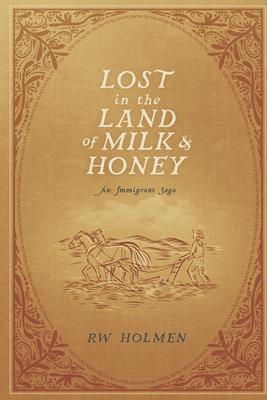This novel of historical fiction plays out over the course of nearly five decades of Minnesota and American history beginning in 1891.
Swedish immigrant Jonas Jnsson arrives in America dreaming of a farm with a herd of spotted cattle, sturdy horses, and a big red barn that will dwarf the meager dwellings left behind in Sweden. With fits and starts, triumphs and tragedies, Jnsson's pursuit of his dreams becomes a twisted journey across the sweep of American history. Turn-of-the-century Minnesota provides the setting, actual events form the backdrop, and real persons weave in and out of Jnsson's fictional story.
The reader quickly learns that the storyteller is the immigrant's son, sharing his father's secrets decades after the fact as the son lies on his deathbed. The main storyline, the immigrant's journey, is occasionally interrupted by flash-forward, first person scenes set in the swanky elder care facility where the son is near death. The reader will learn that the son, the storyteller, was an influential lawyer and jurist.
The novel is set in four Minnesota locales, and each provides important context. Swede Hollow is a mishmash of immigrant hovels on the east side of St. Paul, a landing spot for new immigrants and a departure point when they are ready to begin their new life in America. Jnsson holes up here-eager, impatient, anxious, and hopeful like the other teeming transients who dump into this slum, bound for somewhere else but lacking funds. Sidetracked by fate in his dreams of becoming a yeoman farmer, Jnsson finds himself in a lumber camp of northern Minnesota. The primeval pine forest provides sanctuary before expelling him, and he lands on the shores of Lake Superior in Duluth. The waters of the great unsalted sea alternately soothe and rage. He finally realizes his goal of tilling the virgin soil of his own farm in central Minnesota, but the farmland randomly offers or withholds its bounty. Through it all, the promise of America sometimes encourages but often disappoints him.
The novel paints his journey against the backdrop of history over a fifty-year period: a legendary forest fire; labor strife in mining and shipping; the Great War; the nativist, labor-bashing, intolerant Red Scare; mid-America's flirtation with the Ku Klux Klan; progressive prairie populism; and the Great Depression. Tribalism-religious, economic, cultural, political, and ethnic-posts roadblocks and causes detours in his journey to the American dream.
In the end, the novel is about legacy and family in shifting shades of light and dark.
